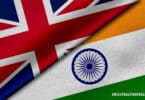Tracing your roots is not just about uncovering the stories of ancestors long gone—it’s also about connecting with living relatives. In India, where extended family ties are often strong, finding distant relatives can open up a whole new chapter of your family history. Whether you’re looking for cousins, aunts, or even more distant connections, modern tools have made it easier than ever to find living relatives and build relationships across generations and continents.
The Importance of Connecting with Living Relatives
For many genealogists, connecting with living relatives can provide a wealth of information that no document or archive can offer. Living relatives often hold key knowledge about family traditions, stories, and oral histories that haven’t been recorded. These relatives may also possess family documents, photographs, or heirlooms that could enhance your understanding of your shared family history.
In India, family networks can be intricate, with large extended families spanning several generations. Even if your direct family tree seems small, distant relatives may hold the missing pieces to your genealogy puzzle.
Tools for Finding Living Relatives
Genealogical Websites and Family Trees
Many genealogical websites, such as Ancestry.com, MyHeritage, and FamilySearch, allow users to create and share family trees. If you’ve already traced your ancestors back to India, there’s a good chance that others may have done the same. These platforms allow you to compare trees, find potential matches, and reach out to people who may share a common ancestor.
The DNA matching features offered by companies like AncestryDNA or 23andMe are especially powerful. These services can connect you with relatives you may not have known existed based on shared genetic material. You can find matches with others researching their family history by uploading your DNA results.
Social Media Platforms
Social media platforms such as Facebook, Instagram, and LinkedIn are powerful tools for connecting with relatives. Many families use Facebook to stay in touch across cities and even continents. By searching for your family name or browsing groups dedicated to genealogy in India, you might be able to track down living relatives.
Some users also create private groups for family members to share information, photos, and family updates. If you suspect you have relatives in a particular region of India, searching by location and surname can sometimes yield results.
Local Genealogical Societies
India is home to a number of genealogical societies that focus on specific regions or communities. These organizations often have members who are experts in tracing family connections and may have access to local records or even personal networks that can help you connect with distant relatives.
Online Genealogy Forums
Forums and message boards dedicated to genealogy are great spaces for collaboration. Websites like Genealogy.com or RootsWeb host conversations where users discuss their family history and exchange tips for tracking down relatives. In many cases, people post looking for specific family connections, which can help you find people searching for the same surnames or regions in India.
Professional Researchers and Regional Archives
If you’re struggling to make connections alone, consider hiring a professional genealogist in India who is familiar with the local records and regional databases. Professionals have access to records that may not be available online, and they can help you navigate complex family histories.
Many regional archives, like the Tamil Nadu Archives or West Bengal State Archives, have records of families, including property transactions, land deeds, and even immigration documents, that could help pinpoint living relatives in a specific area.
How to Reach Out to Relatives
Once you’ve identified potential living relatives, the next step is reaching out. Here are some strategies to help you make contact and build connections:
Send a Friendly, Informal Message
When you first reach out, keep the message informal and polite. Introduce yourself, explain your interest in genealogy, and mention any specific information you’ve uncovered that suggests a connection. Whether you’re contacting a match through a genealogy site, social media, or a forum, keep your tone respectful and considerate, as some people may not be familiar with genealogical research.
Share Family Stories
One of the best ways to break the ice is by sharing family stories. Relatives who may be distant at first could become more engaged when they hear familiar names, events, or places mentioned. Sharing any historical details, such as migration patterns, occupations, or ancestral villages, can be a good way to confirm connections.
Be Patient and Respectful
Not everyone may respond immediately, and some people might be hesitant to discuss family history, especially if sensitive topics like migration, Partition, or past conflicts are involved. Be patient and understanding, and offer to share your own family information to help establish trust.
Organize a Virtual Family Reunion
If you find multiple relatives, consider organizing a virtual family reunion. With platforms like Zoom or Google Meet, it’s easier than ever to connect family members across the globe. Virtual reunions offer an opportunity to share stories, exchange photos, and build relationships with people with common ancestry.
Maintaining Long-Distance Relationships
Maintaining those relationships is key once you’ve contacted living relatives in India. Genealogical connections can be more meaningful when an ongoing relationship is not just a one-time discovery. Here are some ways to maintain long-distance family ties:
Regular Communication: Keep in touch with your new relatives through regular messages or video calls. Sharing updates about your family or continuing to exchange details about family history strengthens the bond.
Sharing Family History Documents: Collaborate on building a shared family tree by exchanging documents, photos, and other historical items. You might uncover important details together that were previously unknown.
Plan a Visit: If feasible, consider planning a trip to meet your relatives in person. Nothing builds connections like face-to-face interactions, and you could also visit ancestral villages, temples, or other significant locations.
Connecting with living relatives in India is an exciting part of genealogy that bridges the gap between past and present. Modern tools like genealogical websites, DNA testing, and social media can help you find distant relatives who hold the key to understanding your family’s history. Whether you can meet in person or maintain relationships across the globe, these connections add depth and meaning to your genealogical journey, making your family history a living story that continues to grow.






